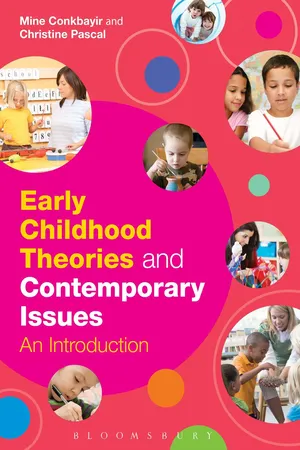
Early Childhood Theories and Contemporary Issues
An Introduction
- 208 pages
- English
- PDF
- Available on iOS & Android
About This Book
Having a good grasp of the theories of child development and how these translate into practice can make a positive difference to how you understand babies and children and the ways in which you can help them learn. This approachable guide offers easy access to a wide range of concepts, as well as classic and current theories, about how babies and children learn. Each chapter offers clear guidance on how to recognise the theory in action and suggests ways to test these ideas out in early years settings, supporting the development of reflective practice. Case studies are included throughout, along with questions to guide thinking and encourage readers to develop their practice. Summaries conclude each chapter offering a quick reference of the theory examined and the benefits of applying it to practice. Early Childhood Theories and Contemporary Issues is an essential guide for all those looking to develop and enhance their practice in supporting child development within the early years.
Frequently asked questions
Information
Table of contents
- FC
- Half title
- Also available from Bloomsbury
- Title
- Copyright
- Dedication
- Contents
- Foreword
- Preface
- Acknowledgements
- List of Tables and Figures
- 1 An Overview of Theory and Practice in the Early Years
- 2 Jean-Jacques Rousseau (1712–78)
- 3 Friedrich Froebel (1782–1852)
- 4 Rachel McMillan (1859–1917) and Margaret McMillan (1860–1931)
- 5 Sigmund Freud (1856–1939)
- 6 John Bowlby (1907–90)
- 7 Jean Piaget (1896–1980)
- 8 Lev Vygotsky (1896–1934)
- 9 Jerome Bruner (1915–)
- 10 Colwyn Trevarthen (1931–)
- 11 Urie Bronfenbrenner (1917–2005)
- 12 Bridging the Gap: Understanding the Use of Neuroscience in the Early Years
- 13 What Next? Reconceptualizing Early Years Education
- 14 Bringing the Theories Alive – How to Undertake Action Research in Your Setting
- 15 Back to the Future: Lessons from the Past into the Present
- Glossary of Terms
- Bibliography
- Index